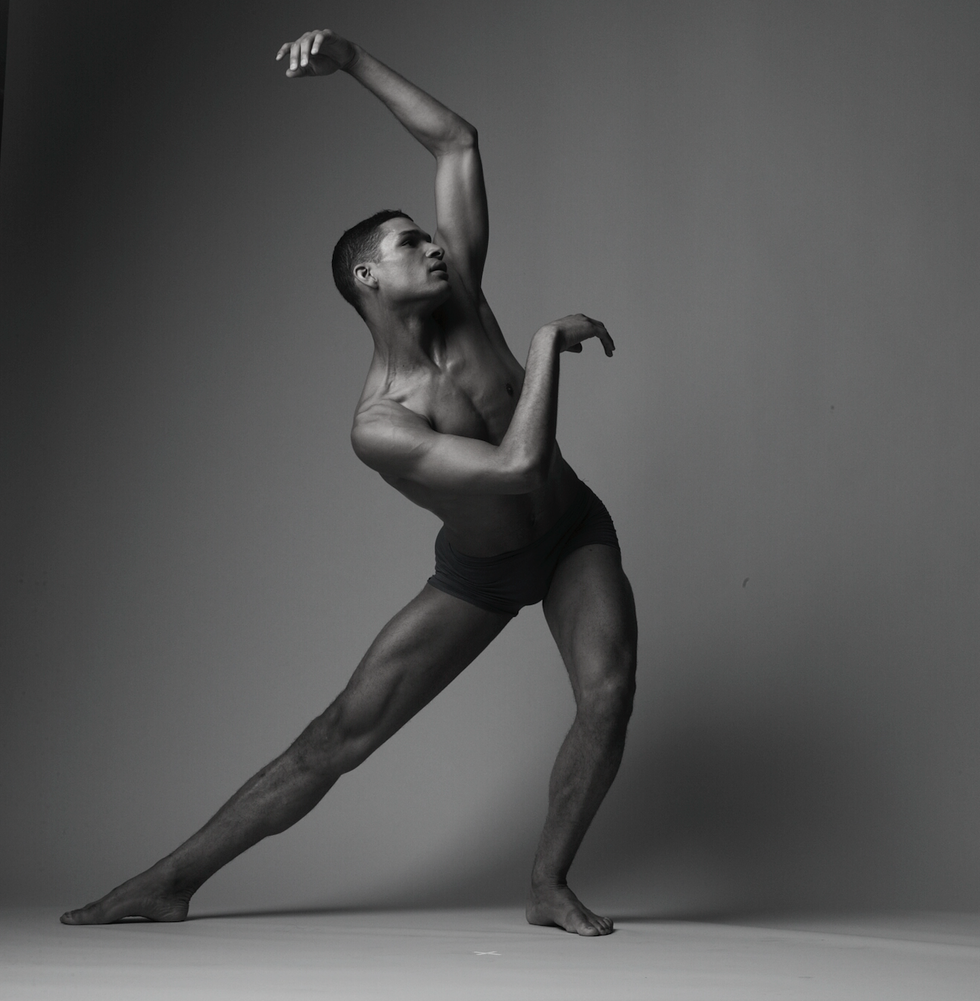Amidst Continued Protests in Portland, Adam McKinney’s New Show Explores His Black and Jewish Identities
Shelter in Place, Adam McKinney’s new multimedia installation at the Oregon Jewish Museum and Center for Holocaust Education, is layered with meaning. For McKinney, the title makes explicit that we’re in an emergency situation. “Not only because of COVID-19, but also because of the pandemic of racism,” he says. The work is on display in the museum’s downtown Portland windows, meaning that protesters who continue to take to the streets each night can encounter it in passing.
The title Shelter in Place also refers to the Jewish holiday of Sukkot, which took place earlier this month. Sukkot commemorates the fall harvest and the sheltering of the Israelites during their exodus from Egypt, and is celebrated by building a sukkah: a temporary, hut-like structure.
This multidimensionality comes naturally to McKinney, who explores his identity as a Black, gay, Jewish, Native Heritage artist in his work. “My interest as a dancer and choreographer is to literally and figuratively put back the pieces of history to make sense of our present,” he says.
Formerly a member of companies including Alvin Ailey American Dance Theater, Béjart Ballet Lausanne and Alonzo King LINES Ballet, McKinney is now based in Fort Worth, where he’s an assistant professor of dance at Texas Christian University.

Andrew Eccles, Courtesy McKinney
Commissioned by Asylum Arts as parts of its multi-city Dwelling in a Time of Plagues initiative, Shelter in Place is made up of two dance films and a collection of photographs. McKinney started working on the photo exhibit, SCAB, last year after discovering the 1921 murder of a Black man named Fred Rouse while researching Fort Worth’s history of lynching. “I could locate no photos of Mr. Rouse, so I took it upon myself to use my body as the canvas,” says McKinney, who danced dressed as Rouse at each of the sites associated with his lynching. Navajo photographer Will Wilson captured McKinney in tintype, further blurring the line between past and present.
Footage of McKinney in the Fort Worth stockyard, where Rouse was first attacked, made its way into Unfolding History, a nine-minute film that premiered earlier this year and has found a new home in Shelter in Place. The images are interspersed with references to the early 1900s: Text from Charlie Chaplin’s The Kid flashes alongside an 1897 Thomas Edison film of a young Black boy dancing in front of a circle of white men. “The music is popular Ku Klux Klan music from the time, which I also subvert,” says McKinney. “My goal is to look back to histories of trauma, but it is not meant to re-traumatize.”
Glorious Clouds, a hologram film that McKinney created with fellow TCU professor Roma Flowers during the pandemic, completes Shelter in Place. “It’s representative of the clouds of glory that God provided the Israelites when they were leaving Egypt,” says McKinney. “It is the safe dwelling, and the possibility of healing.” While in Unfolding History location plays a central role, here McKinney dances out of space, making swirling patterns and turning around himself while bathed in a golden light.
Shelter in Place
fills 12 of the Oregon Jewish Museum’s windows, an open invitation to audiences to stop and watch through the “glass mask.” McKinney virtually oversaw the installation from his home in Texas, and attended the exhibit’s opening via Zoom. Bare branches hang from the gallery’s ceiling and swirl throughout the space, referencing the schach, the plant material used to provide shade and protection in a sukkah, and the lynching of Rouse.
“I am subverting and inverting the idea of the sukkah, laying bare the inside and bringing it outside,” says McKinney. “Sukkot is supposed to be z’man simchateinu, the time of our happiness. Shelter in Place is about showing both sides: the joy and the healing, but also the pain, demonstrating both our frailty and our strength.”
Shelter in Place is open at the Oregon Jewish Museum and Holocaust Education Center through the end of November. The piece is a collaboration of Asylum Arts and The Oregon Jewish Museum and Center for Holocaust Education, supported by CANVAS and organized by the Council of American Jewish Museums as part of the larger project, Dwelling in a Time of Plagues.




